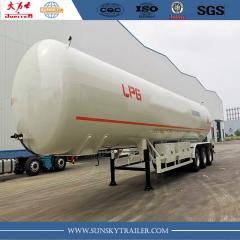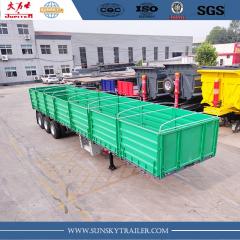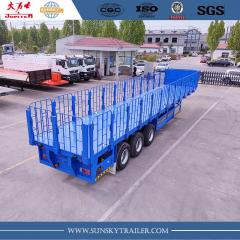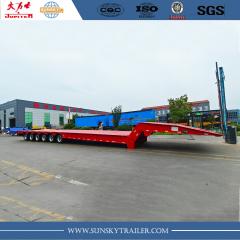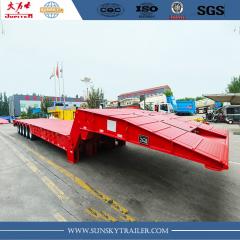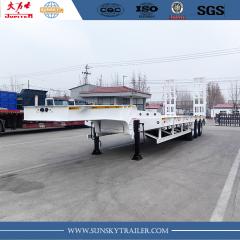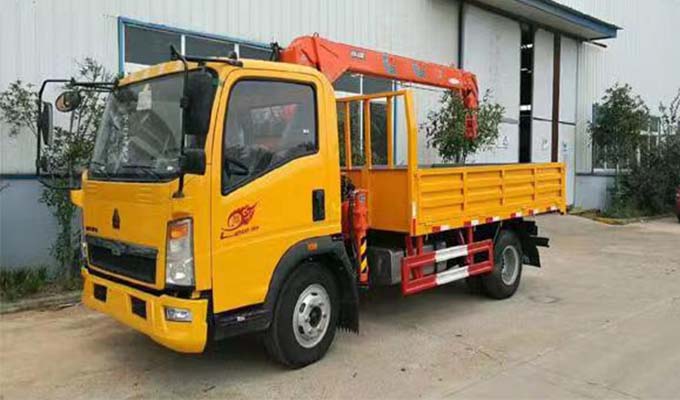With the continuous development of the crane industry, more and more enterprises join the crane industry.
Crane classification
Lifting machinery used in the construction of the bridge, according to its structure and performance, generally can be divided into light and small lifting equipment, bridge type lifting machinery and boom type crane, cable crane four categories. Light and small lifting equipment such as: jack, pneumatic hoist, electric hoist, balance hoist (also known as balance hoist), hoist and so on. Bridge type of lifting machinery such as beam crane, etc. Boom type crane such as fixed rotary crane, tower crane, truck crane, tire crane, crawler crane and so on. A cable crane, such as a lift.
Divide by lifting property: mobile crane, tower crane, mast crane.
Divide by drive mode: a kind of centralized drive, that is, with a motor to drive the long drive shaft on both sides of the active wheel. The other is driven separately, namely the active wheels on both sides are driven by a motor. Medium and small bridge crane more use brake, reducer and electric unit synthesis of one of the "three in one" drive, large weight of the ordinary bridge crane for easy installation and adjustment, the driving device often uses universal coupling.
According to the structure form, the crane is mainly divided into light and small lifting equipment, bridge type (bridge type, gantry crane), boom type (self-propelled, tower type, gantry type, railway type, float type, mast type crane), cable type.
1.Light and small lifting equipment
The characteristics of light and small lifting equipment are light, compact structure, simple action, the scope of operation projection to point, line. Light, small lifting equipment, generally only one lifting mechanism, it can only make a single lifting movement of heavy objects. Belongs to this category are: jacks, pulleys, hand (gas, electric) moving hoist, winch, etc. Electric hoists are often equipped with running trolleys and metal frames to expand the operating range.
Electric hoist
CD1, MD1 series of wire rope electric hoist is an improved product based on the original CD and MD type. It has the characteristics of compact structure, light weight, safe and reliable, common degree of parts, strong interchangeability, high lifting capacity, easy maintenance and so on. It is a widely used and popular light lifting equipment.
The calabash has two types: fixed type and trolley type. The fixed type is divided into four types: A1, A2, A3 and A4 according to the different positions of the fixed feet on the top, bottom, left and right. It can be directly installed on the frame for use. The trolley type has the function of running and can be installed on the track for use.
2. Bridge crane
It can be used in the rectangular site and the operation over it. It is mostly used for the loading and unloading of goods in the workshop, warehouse, open-air yard, etc. There are beam crane, bridge crane, cable crane, carrier bridge, etc.
(1) Beam crane: beam crane mainly includes single beam bridge crane and double beam bridge crane
The main girder of the bridge of single beam crane is made of I-shaped steel or combined section of steel mold and steel plate. Lifting trolley is usually assembled by hand hoist, electric hoist or hoist as lifting mechanism parts.
(2) Bridge crane:bridge crane is a bridge running on the elevated track, also known as the overhead crane. The bridge of the bridge crane runs lengthways along the track laid on the viaduct on both sides, and the lifting car runs laterally along the track laid on the bridge, forming a rectangular working range, which can make full use of the space under the bridge to lift materials and is not hindered by the ground equipment.
form, main beam form and sphanger form. Generally used in ports.
(3) gantry crane is generally classified according to the gantry structure form, main beam form and sphanger form. Generally used in ports.
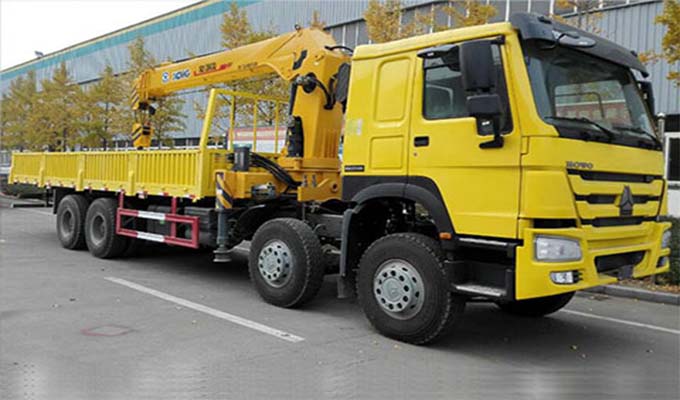
3. Boom crane
The characteristics of the boom crane are basically the same as the bridge crane. It can be used in the circular field and the overhead operation, and is mostly used for open-air loading and unloading and installation. There are gantry crane, floating crane, mast crane, wall crane and deck crane, etc.
The boom crane includes: hoisting mechanism, luffing mechanism and rotating mechanism. Relying on the coordination of these mechanisms, the heavy objects can be lifted and carried in a certain cylindrical space. The boom crane is mounted on the vehicle or other forms of transportation (mobile) tools, which constitutes a running boom type rotary crane. Such as truck crane, wheel crane, tower crane, gantry crane, floating crane, railway crane and so on.
Lifting Crane Structure
Crane operating mechanism generally only use four active and driven wheels, if the weight is very large, commonly used to increase the wheel to reduce the wheel pressure. When there are more than four wheels, an articulated equalizing frame device must be used to distribute the load of the crane evenly across the wheels.
The metal structure of the bridge is composed of main girder and end girder, which is divided into two categories: single main girder bridge and double girder bridge. The single main girder bridge is composed of a single main girder and end girders located on both sides of the span, and the double girder bridge is composed of two main girders and end girders.
The main beam is rigidly connected with the end beam, and the wheels are arranged at both ends of the end beam to support the bridge to run on the viaduct. The main girder is welded with rails for the operation of the lifting trolley. There are more typical structure types of bridge girder, such as box structure, four truss structure and hollow truss structure.
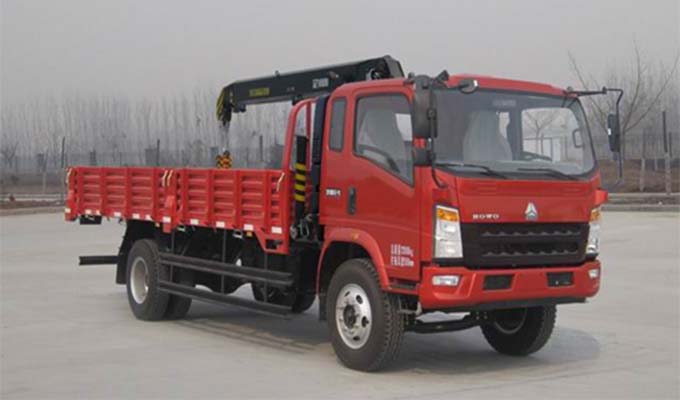
Boom crane safety device
In order to ensure the safety and reliability of lifting operation, the crane is equipped with a more perfect safety device, in order to protect the parts or remind the operator to pay attention to the accident, so as to play a role of safety protection.
1. Each relief valve in the hydraulic system: it can suppress the abnormal high pressure in the circuit to prevent the damage of the hydraulic oil pump and motor, and prevent the overload state.
2. Boom looping safety device: when an accident occurs, the high pressure hose or oil pipe in the boom looping cylinder loop burst or is cut off, the balance valve in the hydraulic circuit will act to lock the working oil from the lower chamber of the cylinder, so that the boom will not fall, so as to ensure the safety of operation.
3. Boom telescopic safety device: when an accident occurs, the high pressure hose or oil pipe in the boom telescopic cylinder loop burst or is cut off, the balance valve in the hydraulic circuit will act to lock the working oil from the lower chamber of the cylinder, so that the crane will retracted itself, so as to ensure the safety of operation.
4. Height limit device: after the hook is lifted to the specified height, it touches the limit hammer, opens the travel switch, and the "over-winding" indicator light will be on. At the same time, it cuts off the hook lifting, lifting arm extending, lifting arm bending and other operations to ensure safety. At this time, as long as the hook is lowered, the boom is retracted or the boom is lifted (that is, to the safe side of the operation) and other handles, so that the limit of the heavy hammer to remove constraints, the operation will return to normal. In special occasions, such as still need to make a small amount of overwinding operation, can press the release button on the instrument box, then the role of the limit will be lifted, but at this time the operation must be very careful to prevent accidents.
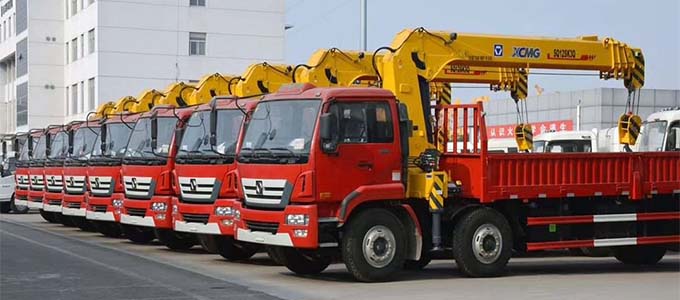
5. Leg locking device: when an accident occurs, the high pressure hose or tubing leading to the vertical oil cylinder of the leg is broken or cut, the two-way hydraulic lock in the hydraulic system can block the pressure oil of the two chambers of the cylinder of the leg, so that the leg does not shrink or swing out, so as to ensure the safety of lifting operation.
6. Lifting weight indicator: the lifting weight indicator is set on the close side of the basic arm (that is, the right side of the control room), the operator sitting in the control room can be clearly observed, can accurately indicate the elevation Angle of the lifting arm and the rated lifting weight allowed under the corresponding working conditions of the crane.
7. Lifting characteristics table: set on the front side of the lower wall panel of the control room, the table lists the rated lifting weight and lifting height under various arm lengths and various working ranges, so as to refer to the operation. When lifting work, must not exceed the value specified in the table.
Characteristics of the run-in period
1. Fast wear and tear
Due to the new machine parts processing, assembly and adjustment and other factors, the friction surface is rough, the contact area of the mating surface is small, and the pressure of the surface is uneven. During the operation of the machine, the concave and convex parts of the surface of the parts rub with each other, and the metal fragments that fall down as abrasives continue to participate in the friction, which accelerates the wear of the surface of the parts. Therefore, the running-in period is easy to cause parts (especially with the surface) wear, wear speed is fast. At this time, if the overload operation, it may lead to parts damage, produce early failure.
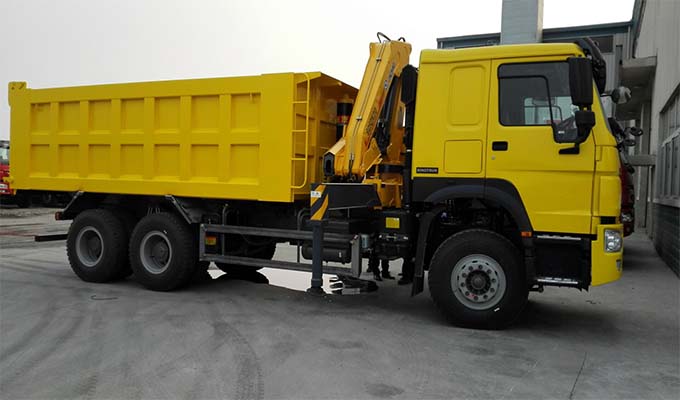
2. Poor lubrication
Because the fit clearance of the newly assembled parts is small, and because of assembly and other reasons, it is difficult to ensure the uniformity of the fit clearance, and the lubricating oil (grease) is not easy to form a uniform oil film on the friction surface to prevent wear. Thus reduce the lubrication efficiency, resulting in early abnormal wear parts. If it is serious, it will cause the scratch or bite on the friction surface of the precision match, which will lead to the occurrence of the fault.
3. Loose
New processing and assembly of parts, there is a deviation in geometric shape and size, in the early use, due to the impact, vibration and other alternating load, as well as the influence of heat, deformation and other factors, coupled with wear and other reasons, easy to make the original fastening parts loose.
4. Leakage occurs
Due to the loosening of machine parts, vibration and the influence of machine heat, the sealing surface and pipe joints of the machine will appear leakage phenomenon.Some casting, processing and other defects, it is difficult to find in the assembly and debugging, but due to the vibration and impact in the process of operation, this defect is exposed, manifested as leakage (seepage) of oil (water). Therefore, the running-in period is prone to leakage.
5. Many operating errors
Due to the lack of understanding of the structure and performance of the machine (especially the new operator), it is easy to cause failures due to operational errors, and even cause mechanical accidents.
Crane as a large lifting equipment, the cost of buying a crane is not a small number. In order to extend the life of the lifting, make it more durable, we must understand the crane fuselage in the use of the process may appear in general, find a way timely to solve the problem.





